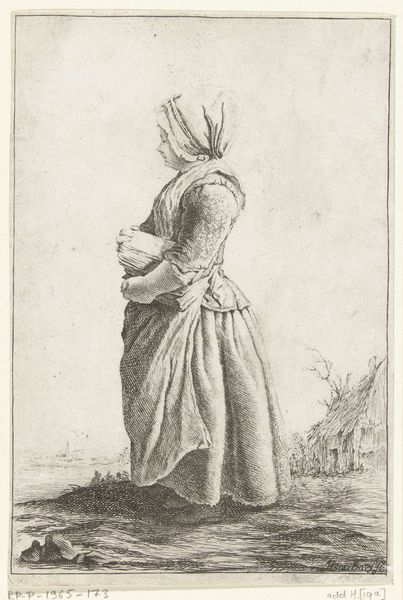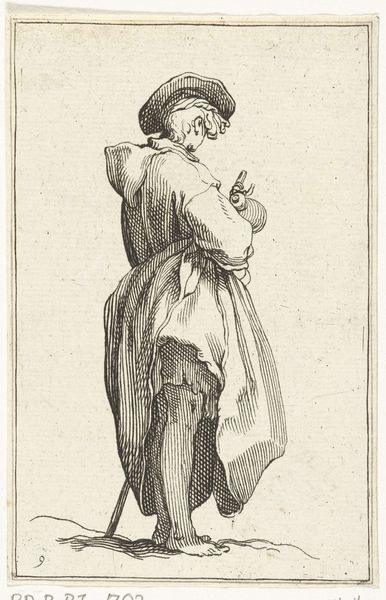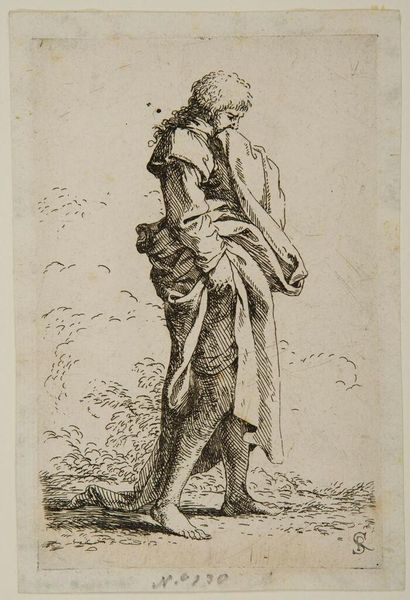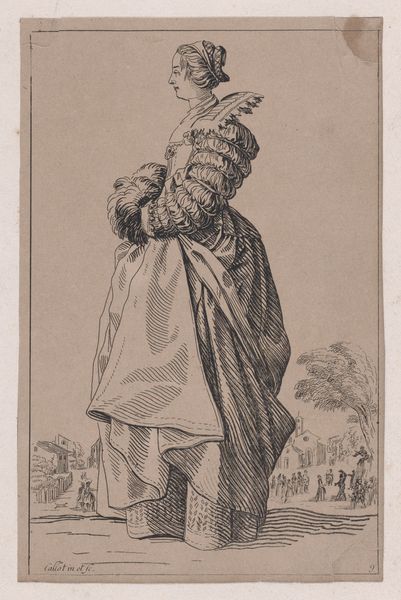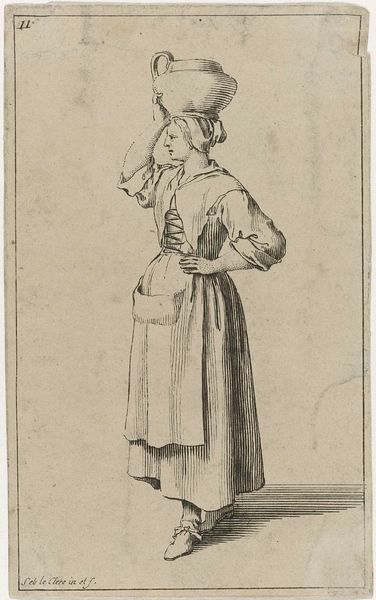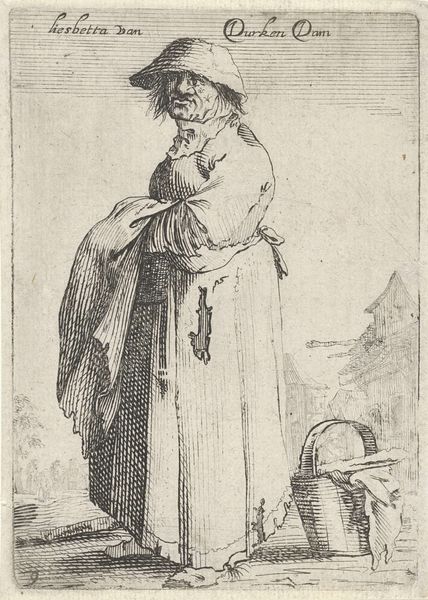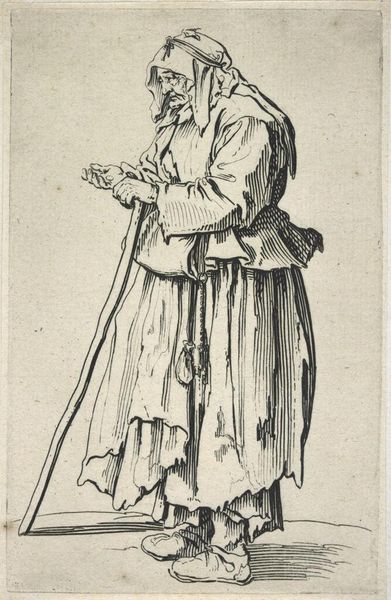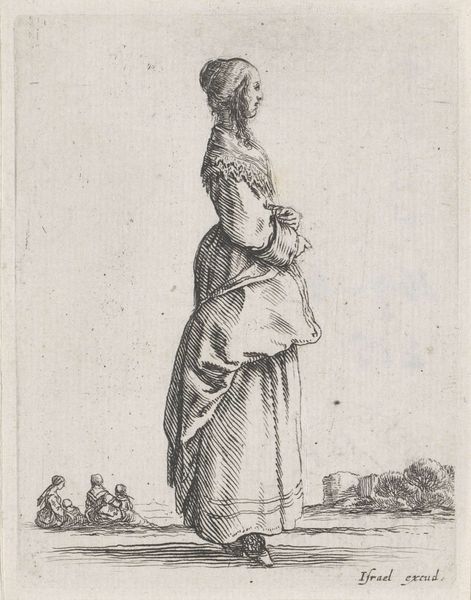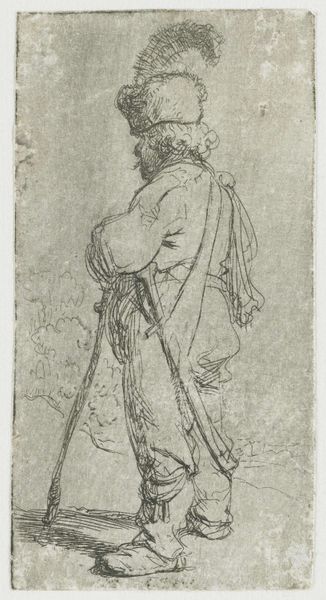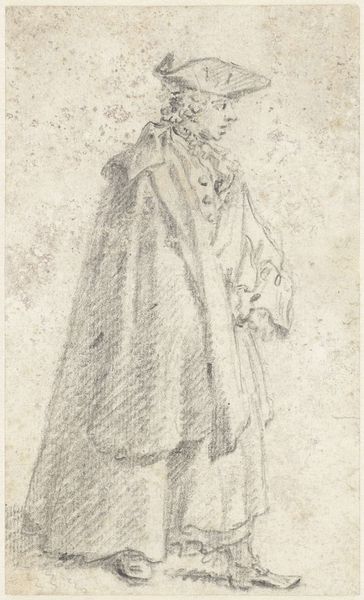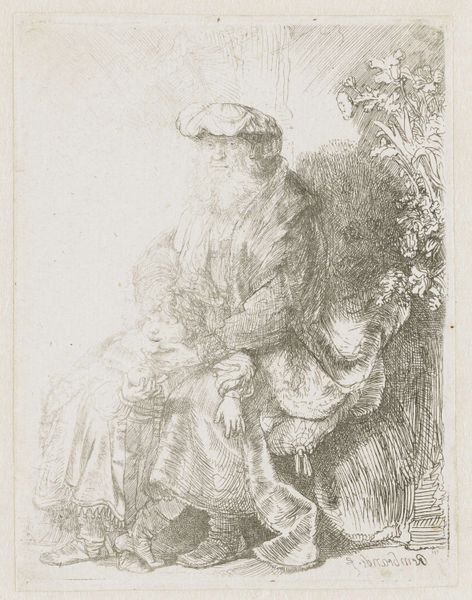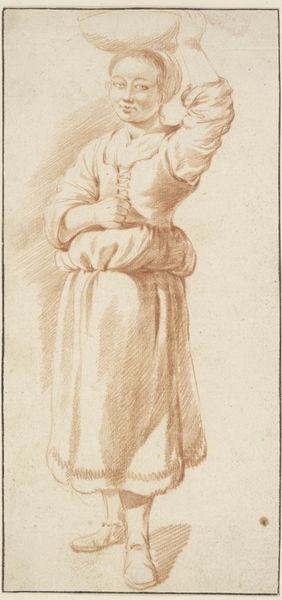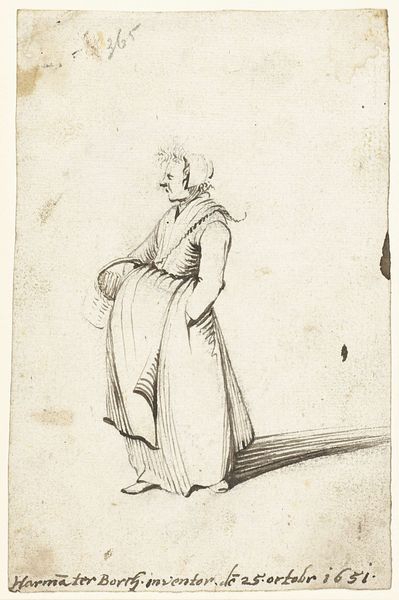
drawing, etching
#
portrait
#
pencil drawn
#
drawing
#
baroque
#
etching
#
pencil sketch
#
figuration
#
pencil drawing
#
portrait drawing
Dimensions: height 141 mm, width 89 mm
Copyright: Rijks Museum: Open Domain
Curator: Let's turn our attention to "Standing Lady, Facing Left," an etching by Antoon Overlaet, likely created between 1730 and 1774. It has a somewhat mournful mood, wouldn't you say? There’s a somberness evoked through the sepia tones. Editor: Absolutely, and perhaps that's linked to the era. This depiction reflects the baroque love for intricate detailing—look at the incredible layers of fabric, the lace. But let’s also consider the implied status. What did her clothing signify in her time? Curator: Precisely. The visual language speaks of class. Observe how the heavy, ornate garments create this almost pyramidal composition, grounding her physically but also emphasizing social elevation and possibly encumbering her freedoms. Editor: Good point. She's placed quite centrally, yet almost fades into the background—the lines of the figure are clean but thin compared to the crowd sketched behind her. The woman is obviously important but has only a light impact on society overall, seemingly alone despite the small sketched crowd. Curator: The linear nature of the etching is so evocative here too; notice how line weight affects your perspective of the figure and her presence. Editor: A lovely insight; that thinner rendering may well suggest a limited agency within that society. A privileged existence yes, but dictated by her role as a visual representation of power and class rather than an autonomous agent of change. Her gaze into the distance is telling; one wonders what, if anything, is truly hers to look forward to? Curator: A fitting reading given the historical contexts surrounding women in that era; it really enriches the composition’s dynamic structure. It draws attention to the delicate etching, emphasizing how this type of detail is a narrative technique, allowing this etching to invite deeper interrogation. Editor: It encourages us to examine not just what we see, but who we imagine her to be and what her portrait silently represents about an age gone by.
Comments
No comments
Be the first to comment and join the conversation on the ultimate creative platform.
